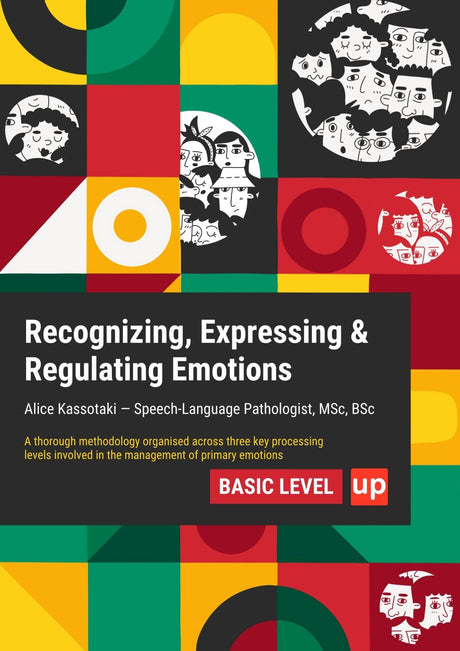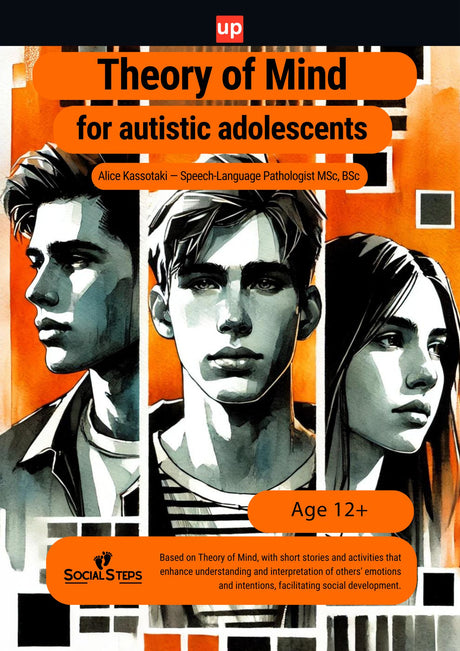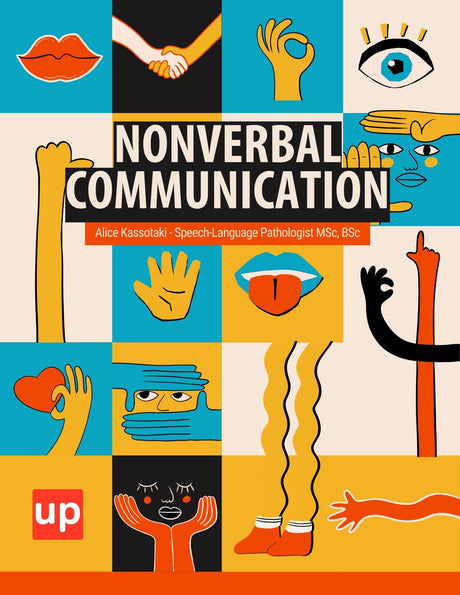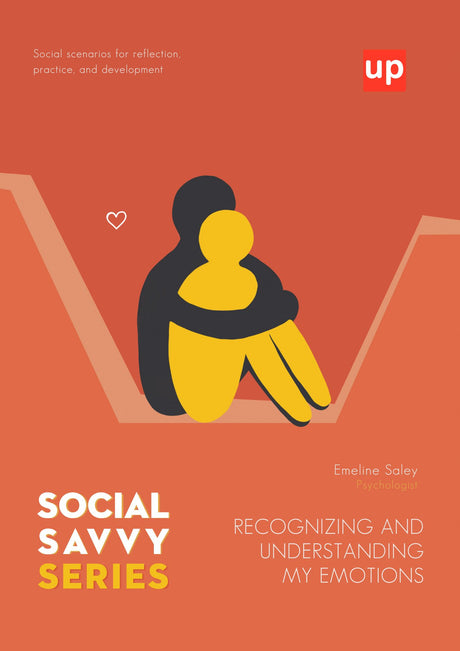Top Tools for Special Education: Enhance Learning and Communication
Special education tools are essential for helping students overcome learning challenges. From communication devices to reading aids, this article explores the top tools for special education that enhance learning and development.
Key Takeaways
- Assistive communication devices, including AAC tools and speech-generating devices, enable students with disabilities to express themselves and engage more effectively in the classroom.
- Writing and reading support tools, such as speech-to-text software and text-to-speech tools, enhance literacy skills and comprehension for students with disabilities, promoting a more inclusive learning environment.
- Adaptive learning kits and AI-powered tools provide personalized learning experiences, addressing diverse needs and improving communication, engagement, and skill development among students with special needs.
Assistive Communication Devices

Communication challenges are a significant hurdle in special education, often hindering students’ ability to engage and learn effectively. Assistive communication devices play a crucial role in addressing these challenges, enabling students with disabilities to express themselves and interact with others.
These tools, which include Augmentative and Alternative Communication (AAC) tools and speech-generating devices, are tailored to meet individual needs, ensuring that each student has a voice in the classroom.
Augmentative and Alternative Communication (AAC) Tools
AAC tools are designed for students who are unable to communicate verbally, providing alternative means of expression. These assistive technologies range from simple picture boards to sophisticated AI communication apps that convert spoken language into text, enhancing interaction for visually impaired students.
AAC tools empower students to engage more fully in classroom activities and social interactions.
Speech-Generating Devices
Speech-generating devices are pivotal for students with speech impairments, converting text or symbols into spoken language. These tools enable students to express themselves verbally, facilitating better communication with peers and educators.
Speech-generating devices give a voice to those who cannot speak, significantly enhancing the learning experience for students with disabilities.
Writing and Reading Support Tools

Writing and reading support tools are essential in aiding students with disabilities to overcome challenges in literacy. These tools, which include speech-to-text software, text-to-speech tools, and OCR scanners, cater to diverse learning styles and provide the necessary support to improve comprehension and fluency.
Integrating these technologies helps educators create a more inclusive and supportive learning environment.
Speech-to-Text Software
Speech-to-text software is invaluable for students who struggle with writing tasks. These tools reduce the physical strain of typing, allowing students to focus on their ideas by converting spoken language into written text. This assistive technology not only enhances the writing process but also enables students to multitask and participate more actively in class.
Text-to-Speech Tools
Text-to-speech tools provide audio support for students with reading difficulties, converting written text into spoken language. These tools help maintain focus, conserve energy, and improve comprehension by allowing students to listen to and absorb information more effectively.
Integrated into various digital platforms, text-to-speech technology is a versatile tool that supports diverse learning needs.
Optical Character Recognition (OCR) Scanners
OCR scanners are a game-changer for students with reading difficulties, converting printed text into digital formats that can be read aloud by screen readers. This technology addresses visual processing challenges and dyslexia, making printed materials more accessible and easier to understand.
Visual and Auditory Learning Aids

Visual and auditory aids enhance engagement and understanding in special education by incorporating multimedia into learning experiences. These tools cater to different learning styles, providing additional support to students with disabilities and improving overall comprehension.
Utilizing these aids in the classroom can significantly boost student independence and reduce disruptive behavior.
Screen Readers
Screen readers are essential for students with visual impairments, converting text into speech and providing audio feedback. These tools enable visually impaired students to access digital content independently, interact with computers, and participate in classroom activities.
With various features available, screen readers can be customized to meet individual needs, making them a versatile tool for special education.
Visual Timers
Visual timers are invaluable for helping students manage their time and transitions between activities. These tools offer clear visual cues that help students understand the passage of time and anticipate changes, improving focus and task management.
Visual timers are especially beneficial for students with visual impairments, offering an intuitive way to track time.
Physical and Motor Skills Development Tools

Tools aimed at enhancing physical and motor skills are crucial for promoting independence and coordination among students with tools for special needs. These tools support the development of fine and gross motor skills, helping students perform daily tasks more effectively and confidently.
Gripping Aids
Gripping aids, such as foam tubes and universal cuffs, provide additional support for students with limited dexterity. These tools enlarge the surface area of objects, making them easier to hold and control.
Ergonomic pencil grips and adaptive typing tools are other examples of gripping aids that help improve fine motor skills and enhance the learning experience.
Therapeutic Balls
Therapeutic balls are designed to improve coordination and motor skills through engaging exercises. These balls help students enhance their grasping abilities and strengthen their wrist and hand movements.
Incorporating therapeutic balls into physical activities makes motor skills development fun and effective.
Educational Apps and Websites
Educational apps and websites tailored for special education provide valuable resources to enhance learning experiences and communication among students. These digital tools offer a range of functionalities, from creating digital content to tracking progress, making them indispensable in special education programs and the special education program.
Foundational Skills Practice Tools
Foundational skills practice tools support specific skills development among preschool to third-grade students. These tools are designed to be engaging and effective, helping young learners build a strong foundation in essential academic skills.
Available for free, these tools are accessible to all students, ensuring equal learning opportunities.
Social Skills Development Apps
Social skills development apps, such as Pictello, help students learn and navigate social interactions through themed scripts and social stories. These apps cater to early learners and provide resources for various educational levels, making them versatile tools for developing social skills.
With both free and paid versions available, these apps offer flexible options for educators and parents.
Classroom Management and Organization Tools

Classroom management and organization tools are essential for creating a structured and supportive learning environment in a special education classroom. These tools help special education teachers manage their workloads and provide the necessary structure to support students with special needs.
Teacher-Parent Communication Tools
Effective communication between teachers and parents is crucial for student success. Apps like Seesaw and Remind facilitate this communication, allowing parents to track their child’s progress and engage in discussions about assignments without sharing personal phone numbers.
These tools foster a collaborative approach to education by enhancing relationships between parents and teachers.
Classroom Noise Level Monitors
Monitoring noise levels in the classroom is essential for maintaining an effective learning environment. Noise level monitors provide real-time feedback, helping teachers manage classroom sound and minimize distractions.
Adaptive Learning Kits
Adaptive learning kits consist of various assistive technology devices tailored to meet the diverse needs of special education students. These kits cater to different disabilities and learning styles, providing personalized learning experiences that enhance overall educational effectiveness.
Fidget Kits
Fidget kits, which include popular items like tangles, stress balls, and pop tubes, help students with self-regulation and concentration. These tools have been shown to improve performance on scholastic tests, making them valuable additions to special education classrooms.
Cuddly Cousins & Switches Kit
The Cuddly Cousins & Switches Kit helps develop basic life skills, motor skills, and hand-eye coordination through engaging activities. Designed to teach cause and effect, this kit is especially beneficial for kids on the autism spectrum and other special needs students.
Each kit includes five toy animals and five switches, providing a comprehensive set of tools for skill development.
Digital Libraries and Resources
Digital libraries provide accessible content for students with disabilities, fostering independence in reading and studying. These resources are adaptable for K-12 education, supporting a wide range of learning needs.
Digital libraries play a crucial role in enhancing the learning experience for students with physical disabilities by offering key resources.
Accessible Digital Libraries
Accessible digital libraries cater to students from Pre-K to 12th grade, providing free access to qualifying students and schools. For non-qualifying individuals, a subscription fee is required, but the library includes a large collection of public domain books accessible at no cost.
These libraries are designed to support students with print disabilities, enhancing their learning experience.
Predictive Writing Assistants
Predictive writing assistants are invaluable tools for students who struggle with vocabulary and spelling. These AI-powered tools predict words and phrases based on students’ input, enhancing their writing skills and making the writing process smoother through word prediction.
Available for a monthly fee, these tools are accessible to a wide range of students, from K-12, ensuring that more students can benefit from enhanced writing support.
Books and Educational Resources from Upbility
Upbility offers a comprehensive range of books and educational resources specifically designed for special education teachers, students, and parents. These resources cover a wide array of topics, including speech therapy, social skills development, and cognitive training, providing invaluable support for educators and families alike.
Their materials are crafted to align with the latest educational standards and are grounded in evidence-based practices. This ensures that special education students receive the most effective and up-to-date instruction possible. Upbility's resources are available in both digital and print formats, making them accessible to a diverse audience.
In addition to books, Upbility provides interactive tools and activities that engage students with different learning styles. These resources are designed to enhance foundational skills, improve comprehension, and foster independence among special education students. Whether it's through visual aids, auditory exercises, or hands-on activities, Upbility's offerings are tailored to meet the unique needs of students with disabilities.
For educators, Upbility's resources serve as a valuable tool in creating a more inclusive and supportive learning environment. They offer strategies and insights that help teachers effectively address the challenges faced by students with special needs, ensuring that every student has the opportunity to succeed.
Overall, Upbility's commitment to quality and innovation makes them a trusted provider of educational resources in the field of special education. By equipping teachers, students, and parents with the right tools and knowledge, they play a crucial role in enhancing the educational experiences and outcomes for special education students.
Artificial Intelligence Tools
Artificial intelligence is revolutionizing special education, providing tools that offer personalized support and adaptive learning experiences. These tools enhance communication and learning, making education more accessible and effective for students with special needs.
AI-Powered Communication Apps
AI-powered communication apps, such as Be My Eyes and Seeing AI, significantly enhance the communication capabilities of visually impaired students. These apps provide detailed object descriptions and read documents aloud, helping students navigate their environment more effectively and engage more fully in classroom activities.
AI-Based Reading Support Tools
AI-based reading support tools improve reading comprehension and fluency for students with learning challenges. These tools adapt to individual learning needs, providing personalized support that enhances overall reading skills and comprehension.
Summary
In summary, assistive technology offers a wide array of tools designed to support the diverse needs of special education students. From communication devices to AI-powered learning aids, these tools play a crucial role in enhancing learning experiences, promoting independence, and improving overall educational outcomes. By integrating these technologies into the classroom, educators can create more inclusive and supportive learning environments that cater to the unique needs of each student.
The transformative potential of these tools is immense, and their continued development and implementation will undoubtedly lead to even greater strides in special education. Embracing these innovations not only benefits students with disabilities but also enriches the educational landscape as a whole, fostering a more inclusive and equitable learning environment for all.
Frequently Asked Questions
What are assistive communication devices?
Assistive communication devices are specialized tools that support individuals with disabilities in communicating effectively, including Augmentative and Alternative Communication (AAC) tools and speech-generating devices. These devices facilitate meaningful interactions and enhance communication capabilities.
How do text-to-speech tools help students with reading difficulties?
Text-to-speech tools significantly assist students with reading difficulties by transforming written text into spoken language, thereby enhancing comprehension and retention of information. This technology provides crucial support for those struggling with traditional reading methods.
What are some examples of physical and motor skills development tools?
Gripping aids such as foam tubes and universal cuffs, along with therapeutic balls, are effective tools for developing physical and motor skills. Utilizing these tools can significantly enhance coordination and fine motor abilities.
How do AI-powered communication apps support visually impaired students?
AI-powered communication apps support visually impaired students by offering detailed object descriptions and reading documents aloud, significantly enhancing their communication and access to information. These tools empower students to engage more effectively in their educational environment.
What benefits do predictive writing assistants offer?
Predictive writing assistants significantly enhance writing skills by streamlining the writing process through word and phrase predictions, thereby improving efficiency. This allows users to focus more on content quality rather than grappling with the mechanics of writing.
References
- American Speech-Language-Hearing Association. (2023). Augmentative and Alternative Communication (AAC). Retrieved from https://www.asha.org/public/speech/disorders/AAC/
- National Center for Learning Disabilities. (2023). Assistive Technology Tools: Reading. Retrieved from https://www.ncld.org/tools-and-resources/assistive-technology-tools-reading/
- Individuals with Disabilities Education Act (IDEA). (2023). U.S. Department of Education. Retrieved from https://sites.ed.gov/idea/
- International Society for Technology in Education (ISTE). (2023). Artificial Intelligence in Education: Enhancing Learning for All. Retrieved from https://www.iste.org/explore/Artificial-Intelligence-in-Education-Enhancing-Learning-for-All
- Center for Parent Information and Resources. (2023). Visual Impairments. Retrieved from https://www.parentcenterhub.org/visual-impairments/









